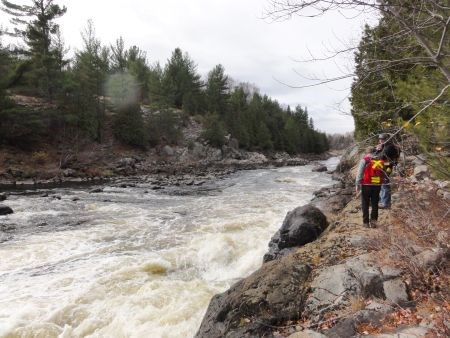In the race to develop renewable energy projects across the North, Xeneca Power Development Inc. stands out amongst the water power players for the sheer number of projects it's proposing.
Last April, the Ontario Power Authority (OPA) approved 19 of its hydroelectric projects under the Feed-in Tariff (FIT) program, which guarantees producers 13.1 cents per kWh for projects generating 10 MW or less, and the company has an additional 14 projects in the queue awaiting the economic connection test (ECT) to determine grid connectivity capability.
The Xeneca projects represent about half of all electricity generated by water power in the province, for a total of 72 MW.
“To put that into perspective, at full capacity, one megawatt will provide enough power for 1,000 households for a year,” said Mark Holmes, vice-president of corporate affairs, noting that, with down time, the actual figure is closer to 700 households. “Those 19 projects will generate spending somewhere in the $300- to $400-million range.”
Half that total will be spent on equipment, such as turbines, generators, and the control systems that make up the generating infrastructure, while the remainder will go towards the construction of powerhouses, roads, and power lines.
Part of Xeneca's mandate is to purchase as much material in Ontario as possible, providing “a nice economic push” into the local economy during the 24 months it takes to construct a hydroelectric station, Holmes said.
The projects will also generate employment, although it will be nominal. Job opportunities will spike during the construction phase, while one or two full-time employees will be required for daily upkeep and maintenance of the plants, which are fully automated.
Stations located within the boundaries of a municipality are also required to pay a gross revenue charge (GRC) — a levy mandated under the province's Electricity Act based on a station's generating revenue — back to the community in which the plant is housed.
“It's not inconsequential,” Holmes said. “The estimate we have for return is about $5 million per megawatt over the 40-year lifespan of the contract that we have with the OPA.”
Xeneca was attracted to the North because of the largely untapped resource its water bodies represent. Hydroelectric power projects require ideal geographic conditions, including sufficient water flow, to be viable.
Water bodies that have received protected status are off-limits, while many of the prime sites have already been developed over the last century, he said.
The OPA only awards contracts once it's been determined that the project can connect to the grid, because “there's no sense in building it if you can't connect it,” Holmes said.
“There's a lot of money being poured into redeveloping and expanding the transmission grid in the province, and hopefully some of those projects that are awaiting that connection availability will come on stream in the coming months or years.”
The Northwest is an area of particular concern. With a lack of transmission capacity to get the power out to southern Ontario, where energy consumption is high, upgrades are needed to the grid before additional projects can come online.
Holmes said the need for power in mineral exploration in the Ring of Fire might force the issue, providing upgrades to the line sooner than anticipated.
Xeneca is already working closely with miners Vale, Xstrata, and North American Palladium, as well as forestry companies like Tembec, as there are “synergies” that can be realized between the development companies and Xeneca.
The projects — which are slated for Foleyet, Iroquois Falls, Sudbury, Cochrane, Englehart, Elliot Lake, Thunder Bay, and Kapuskasing — are currently undergoing a class environmental assessment.
The Thunder Bay project on the Matawin River at McGraw Falls is closest to development, with construction slated to begin this year.
There is a limited window of opportunity for construction. The developers have to be out of the water during spawning season in June and July but Holmes is optimistic that Xeneca can be producing power into the grid by 2015, pending approvals and permitting from the province.




